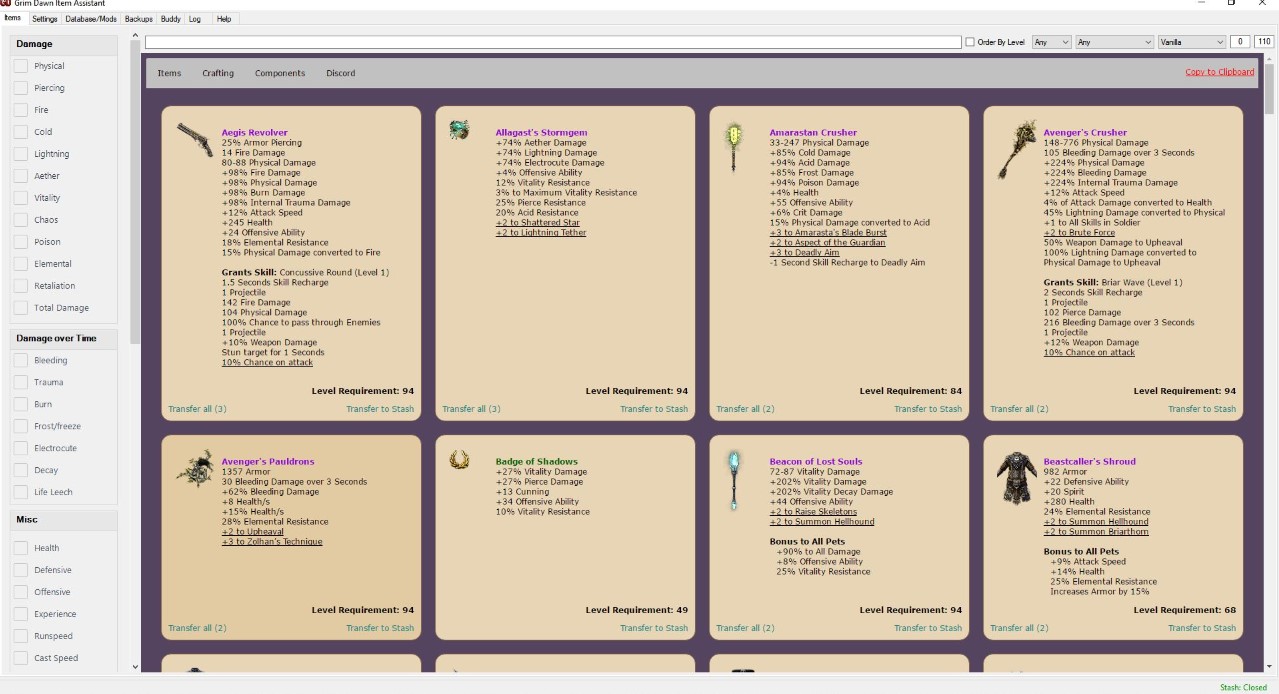

I say modification instead of reduction because it is possible to have a negative resistance value that actually increases incoming damage of the respective type. Resistance to a damage type applies a multiplicative modification to all damage of the corresponding type that the character receives. The available WPS will be listed in their respective class sections.Īll damage types are opposed by Resistances which I put in bold because they are the single most important factor in keeping your character alive, and I do mean that. In this scenario, you will see each individual WPS less frequently (a 20% chance might become a 16% chance), but every attack will be a WPS of some type. If, due to certain class and item combinations, your total chance of WPS exceeds 100%, all values will scale down proportionally to maintain a 100% total chance of a WPS happening. If you have two WPS with 20% chance to trigger, a default attack or replacer has a 20% for one of them, a 20% chance for the other, and a 60% chance for neither of them. WPS modifiers stack (!!) with the modifiers of the attack replacers, allowing for very powerful combinations.Įvery WPS lists a % chance to trigger, and all your WPS skills contribute together to a single pool of possible attacks based on that % value. It is important to understand that WPS will never trigger when using an Attack Skill, only the basic Default Attack or a Replacer will do. WPS are Passive skills that have a chance of triggering when a Default Attack or Default Attack Replacer is used. The vast majority of your attributes will come from levelling your Mastery Bars, but you also get 1 attribute point to spend each level and from certain quests, which will increase the chosen attribute by 8.Ī commonly mis-understood skill type is the Weapon Pool Skill (or WPS for short). It is also needed to equip amulets and rings, as well as for certain caster weapons, caster armor, and caster offhands such as tomes and effigies. It affects your Energy, Energy regeneration, slightly increases your health, and boosts all types of Magical damage (see below). It is also needed to equip guns and swords. It affects your crit/hit chance (called Offensive Ability in Grim Dawn), slightly increases your health, and boosts all types of Physical damage (see below).

Cunning is how swift, deadly, and coordinated you are.

In general these requirements are quite high, so physique is usually the barrier between you and that next super awesome piece of armor. It affects your critical defense and dodge (called Defensive Ability in Grim Dawn), greatly increases your health, increases your health regeneration, and is needed to equip most armor, axes, and maces. The three main attributes are Physique, Cunning, and Spirit. We will start by defining some basics about the game so you don’t misunderstand important concepts and so that you have some orientation for what skills actually do when we get into the details of each class later.Īll characters have three main attributes in addition to Health and Energy, which should be self explanatory. I highly recommend reading the official game guide on Crate’s website [the incredibly excellent Grim Tools [for more information and the chance to really dig into the details of the game. I will not go into item-granted skills or in depth into the constellations on the devotion tree, because there are already good guides for that. To aid in this monumental decision, I’ve listed below every class and skill in the game, its basic characteristics, and a brief overview of why you might want to use it. Worry not, we’ve all been there at the skills screen, wondering what the heck to do with those first three skill points or maybe even what the heck to pick as our first class. There are all these skills and nodes and lines connecting some of them and a big ol’ mess of stars that are grouped by color, and who even knows what a mastery bar is?

Starting your first character in Grim Dawn can be daunting.


 0 kommentar(er)
0 kommentar(er)
